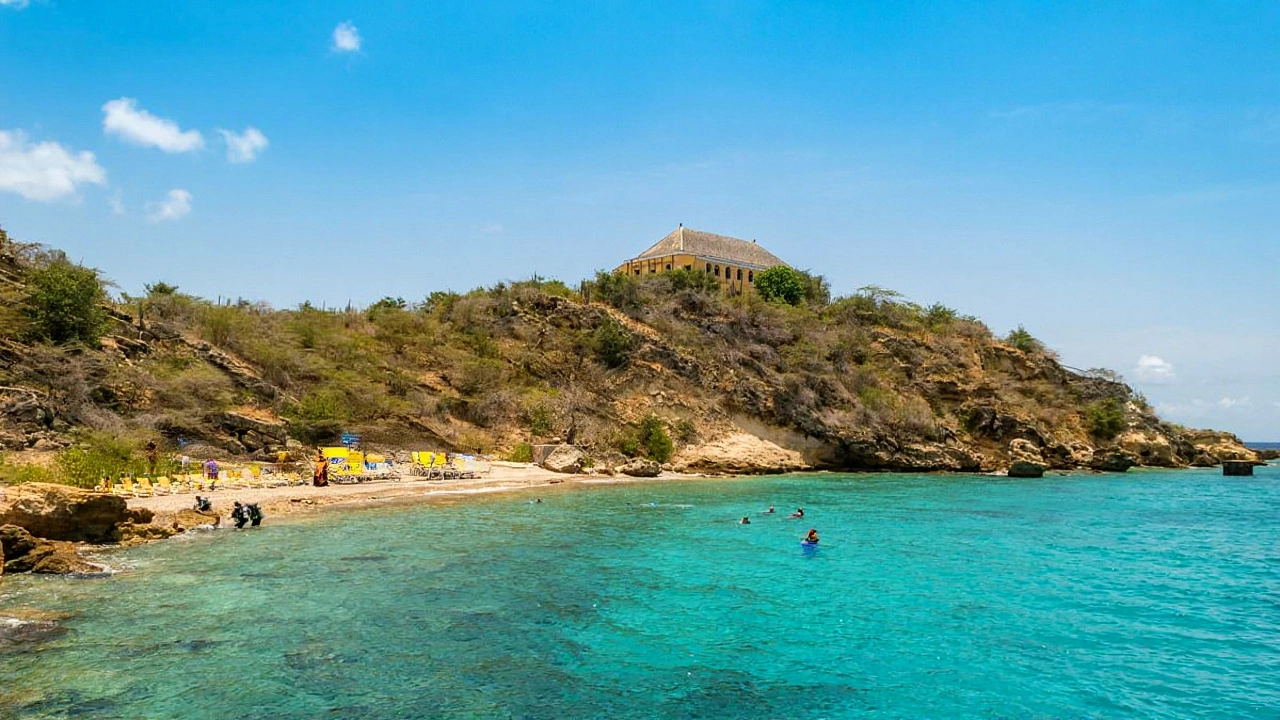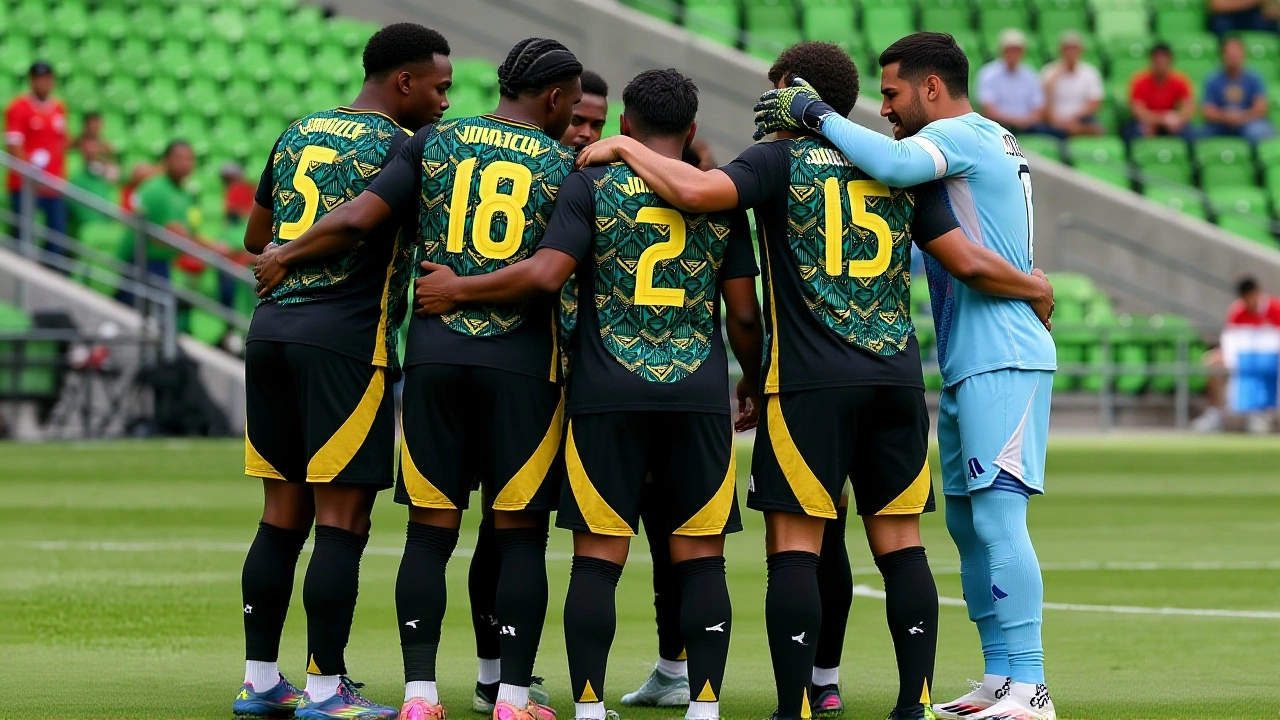On June 18, 2024, CONCACAF delivered one of its most electrifying qualifying nights ever as Panama, Haiti, and Curaçao punched their tickets to the 2026 FIFA World Cup, held jointly in the United States, Canada, and Mexico. The results, decided across three simultaneous matches, weren’t just about points—they were about legacy. For the first time in decades, three Caribbean nations secured direct qualification to the World Cup, shattering the long-standing dominance of the region’s traditional powers. As the Golazo Show put it, this was “potentially the most historic night in Caribbean football history.” And they weren’t exaggerating.
How the Qualification Unfolded
It wasn’t a clean sweep. The path to qualification was a tangled web of goal differences, head-to-head records, and last-minute drama. In Group B, Curaçao edged out Jamaica 2-1 in a tense, rain-slicked match in Willemstad. A late goal from striker Stefano Pinho in the 87th minute sealed it—just enough to leapfrog Jamaica on goal difference after both teams finished with 11 points. Curaçao’s defense, once considered a weakness, held firm under relentless pressure. They’d gone unbeaten in their last four home qualifiers, a streak that now feels like destiny.
In Group C, the stakes were even higher. Honduras faced Costa Rica in San Pedro Sula, needing a win to stay alive. But a 1-1 draw, courtesy of a late equalizer by Costa Rica’s Keysher Fuller, meant Honduras was eliminated. That result, combined with Haiti’s 3-0 win over El Salvador in Port-au-Prince, sent Haiti through on goal difference. The numbers game was brutal: if both Honduras and Haiti won, it came down to goal difference. If both drew? Still goal difference. Haiti’s +8 differential was the difference between glory and heartbreak.
Meanwhile, Panama wrapped up their spot with a 4-0 demolition of Canada—yes, Canada, who surprisingly failed to qualify for the first time since 2010. Panama’s midfield, led by veteran Roman Torres, controlled the tempo with surgical precision. Their 11 wins and 4 losses in the campaign were the most consistent record in the region. But what made it historic wasn’t just the wins—it was who they beat, and how they did it.
A Caribbean Breakthrough
For decades, CONCACAF qualifiers were a two-horse race: Mexico and the United States, with Canada occasionally crashing the party. The Caribbean, despite its footballing passion, was often relegated to footnote status. Haiti hadn’t qualified since 1974. Curaçao, even after gaining FIFA recognition in 2011, had never come close. And Panama? They’d made it in 2018, but never with this kind of regional significance.
Now, all three are in. And it’s not just about representation. It’s about perception. When the Golazo Show commentator said, “This isn’t just qualification—it’s validation,” he wasn’t just being poetic. For the first time, the Caribbean isn’t just participating in the World Cup conversation. It’s shaping it.
And the ripple effects are already visible. Youth academies in Port-au-Prince and Willemstad are seeing enrollment spikes. Local sponsors, previously hesitant, are signing multi-year deals. In Haiti, the national team’s victory triggered spontaneous street celebrations in Cap-Haïtien and Les Cayes—music, dancing, and flags waving in the humid night air. One fan, clutching a hand-painted jersey, told a reporter: “We didn’t just win a game. We proved we belong.”

The Playoff Puzzle and Curaçao’s Advantage
While Panama, Haiti, and Curaçao earned direct berths, two other teams—Jamaica and Costa Rica—will battle in a March 2026 interconfederation playoff for the final CONCACAF slot. But here’s the twist: because of their FIFA rankings, Curaçao may not need to play a preliminary round. They’re currently ranked 78th globally—higher than both Jamaica and Costa Rica—meaning they’ll likely skip the preliminary playoff and go straight to the one-off intercontinental final against a team from Asia or South America. That’s a massive advantage. One game. One chance. But for Curaçao, it’s not just about survival. It’s about making history again.
Legacy and the Ghosts of 2004
There’s a haunting echo in all this. Honduras’ last World Cup qualifying win in San Pedro Sula? It came on October 15, 2004—a 5-2 thrashing of El Salvador. Goals by David Suaso, Rambo Leon, and Amado Gada, who was making his international debut. That team never made it to the World Cup. Now, nearly 20 years later, Honduras is out again. The contrast is stark. The old guard is fading. The new wave—Haiti’s young midfielder Kevin Lafrance, Curaçao’s 21-year-old sensation Joey Veerman, Panama’s 23-year-old striker Alfredo Stephens—are writing a different story.
The 2026 World Cup will be the first with 48 teams. That expansion was supposed to open doors. But no one expected it to open them so wide, so fast, for teams that were barely on the map.

What’s Next?
Now, the real work begins. Training camps will be restructured. Player recruitment will shift. National federations, long underfunded, must now prepare for the global stage. Curaçao’s federation has already announced a $1.2 million investment in youth infrastructure. Haiti’s FA is negotiating a partnership with French clubs for player development. Panama, already more organized, is eyeing a European-based training base.
And the world will be watching. When these teams step onto the pitch in 2026, they won’t just be representing their countries. They’ll be representing a region that refused to stay silent.
Frequently Asked Questions
How did Haiti qualify over Honduras despite Honduras playing at home?
Haiti and Honduras were tied on points after Matchday 6, but Haiti had a superior goal difference (+8 vs. +5). Even though Honduras hosted the match, their 1-1 draw with Costa Rica wasn’t enough. Haiti’s 3-0 win over El Salvador gave them the edge. Goal difference, not home-field advantage, decided it.
Why is Curaçao’s FIFA ranking so important for the playoff?
Curaçao’s 78th-place ranking is the highest among CONCACAF’s non-direct qualifiers. FIFA rules grant higher-ranked teams direct entry into the interconfederation final, skipping the preliminary playoff. This means Curaçao could face just one opponent—likely from Asia or South America—instead of two. It’s a huge advantage.
Has any Caribbean team ever qualified for the World Cup before?
Yes—but rarely. Haiti made it in 1974, and Jamaica in 1998. Trinidad and Tobago qualified in 2006. But never before have three Caribbean nations qualified in the same cycle. This is unprecedented in CONCACAF history and reflects a seismic shift in regional football development.
What does this mean for smaller CONCACAF nations?
It proves that with consistent investment and tactical development, even nations without massive budgets can compete. Curaçao’s success stems from a decade-long focus on youth academies and European-based players. Haiti’s rise reflects grassroots mobilization. The message: talent exists everywhere. The World Cup is no longer just for the rich.
Why was Canada’s failure to qualify so surprising?
Canada entered the qualifiers as a favorite after reaching the 2022 World Cup. But inconsistent performances, injuries to key players like Alphonso Davies, and tactical stagnation cost them. They finished fifth in the group, missing out for the first time since 2010. Their absence opened the door for Caribbean teams to rise.
What’s the significance of Panama’s 4-0 win over Canada?
It wasn’t just a result—it was symbolic. Panama, often seen as the middle tier of CONCACAF, delivered a statement win over a former powerhouse. It signaled the end of Canada’s dominance and confirmed Panama’s status as a consistent qualifier. The scoreline also gave them a massive goal difference boost, which helped secure their direct berth.
